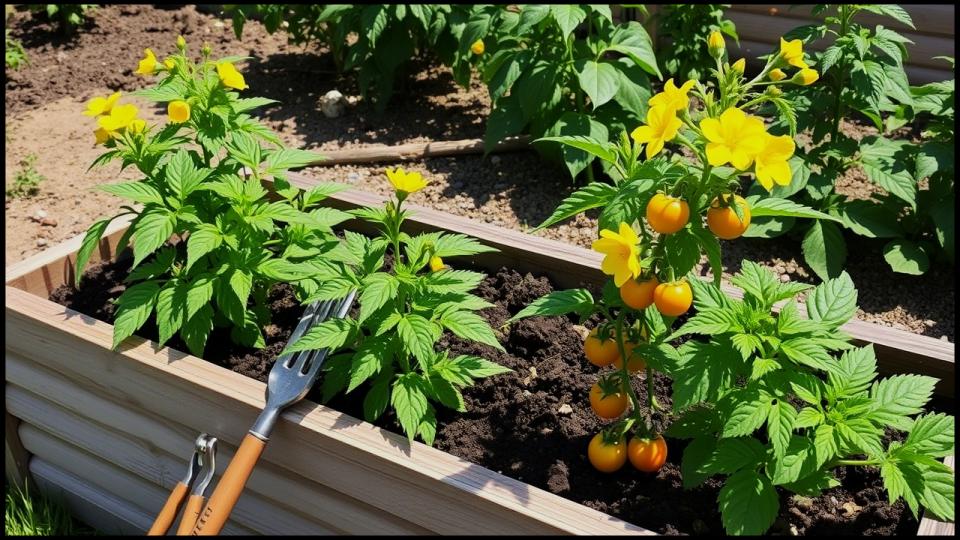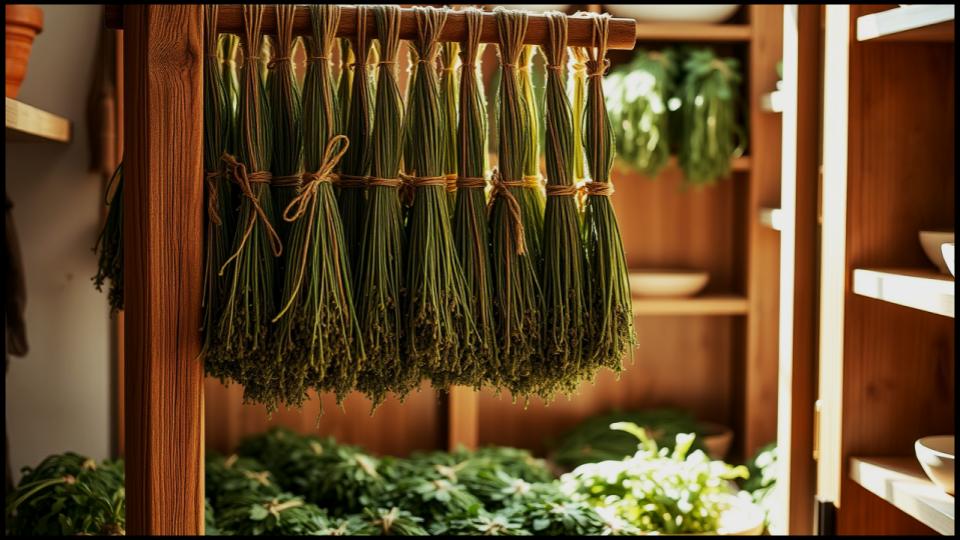
It’s one of the most delightful scenes in a garden: a cat, utterly enchanted, rolling in a patch of fragrant green leaves. But to pigeonhole catnip as a mere feline amusement is to miss out on a world of surprising benefits. For the discerning gardener, growing catnip (Nepeta cataria) offers a wealth of rewards, from its charming, informal beauty to its impressive ability to support a healthier garden ecosystem. This isn’t just a treat for your pets; it’s a wonderfully resilient and versatile herb that asks for so little and gives so much in return.
In this guide, we’ll explore the myriad reasons to welcome this member of the mint family into your life. You’ll learn not just how to grow it, but how to make it thrive, whether you have acres of land or a simple kitchen windowsill. Prepare to discover the enduring appeal of one of nature’s most whimsical and practical plants.
Quick Tips for Catnip Success
Here’s what you need to know about growing this delightful herb:
- Sun is Your Friend: Catnip thrives in at least six hours of direct sunlight daily. For indoor plants, a south-facing window is ideal.
- Don’t Overwater: This is a drought-tolerant herb. Let the soil dry out between waterings to prevent root rot, its most common ailment.
- Contain its Ambition: Like its mint cousins, catnip loves to spread. Planting in containers is a chic and simple way to keep it in check.
- Harvest for Health: Regular trimming encourages a fuller, bushier plant and provides you with a steady supply of fresh leaves for your cat or for your own herbal tea.
The Surprising Benefits of Growing Catnip
Long before it was a staple of pet stores, catnip was a respected herb in gardens across Europe and Asia. Its benefits extend far beyond its most famous application, making it a truly valuable addition to your green space.
For Your Feline Friends: More Than Just Fun
The euphoric reaction most cats have to catnip is due to a compound called nepetalactone. This chemical mimics feline pheromones, triggering a sense of blissful well-being. But providing fresh catnip is more than just a treat; it’s a form of enrichment. It encourages play, reduces stress, and can even help coax a lazy cat into getting a bit more exercise. In my own garden, I’ve noticed my most timid rescues become more confident and playful after a little romp in the catnip patch.
For the Gardener: A Natural Pest Deterrent
One of the most compelling reasons for growing catnip is its role as a companion plant. The same nepetalactone that cats find so irresistible is a potent repellent for a host of garden pests. According to research from the University of Minnesota, catnip can deter pests like:
- Aphids
- Squash bugs
- Flea beetles
- Japanese beetles
Planting catnip as a border for your vegetable garden or interspersing it among your roses can create a fragrant, protective barrier, reducing the need for chemical pesticides.

For You: A Soothing Herbal Remedy
For centuries, humans have also enjoyed the benefits of catnip. While it stimulates cats, it has a gentle sedative effect on people. A warm cup of catnip tea, made from fresh or dried leaves, can be wonderfully calming, helping to ease a restless mind before sleep. It has traditionally been used to soothe an upset stomach and relieve tension headaches. As noted by sources like WebMD, it’s a mild and generally safe herb, but it’s always wise to consult with a healthcare provider before starting any new herbal remedy.
How to Grow Catnip: From Seed to Splendid
Growing catnip is wonderfully straightforward, making it an excellent project for both novice gardeners and seasoned experts. With the right conditions, this hardy perennial will flourish.
Starting from Seed
Catnip seeds have a tough outer coating, and a little extra preparation can dramatically improve germination rates.
- Stratification (The Expert’s Trick): To give your seeds a head start, a process called stratification is key. In my practice, I find this simple step makes all the difference. Place your seeds in a sealed plastic bag with a bit of moist sand or a damp paper towel and store them in the freezer for 24 hours.
- Soak and Sow: After their cold snap, let the seeds soak in a bowl of warm water for a full day. This process, as recommended by MasterClass gardening guides, weakens the seed coat and signals that it’s time to grow.
- Planting: Sow the prepared seeds about ⅛ to ¼ inch deep in a quality seed-starting mix. Place the tray in a warm, sunny spot, and keep the soil consistently moist until you see sprouts, which usually takes 14 to 21 days.
Growing Catnip Outdoors
Catnip is not fussy, but a few considerations will ensure a robust and beautiful plant.
- Location, Location, Location: Choose a spot that receives at least six hours of full sun. In very hot climates, a little afternoon shade is appreciated.
- Soil Preparation: While catnip tolerates poor soil, it thrives in well-draining, loamy, or sandy soil. A common mistake I see is planting it in heavy clay that retains too much water. Amending the soil with a little compost before planting will provide all the nutrients it needs.
- Spacing: Give your plants room to breathe and grow. Space them 18 to 24 inches apart. This ensures good air circulation, which helps prevent fungal issues like powdery mildew.
- Watering: Once established, catnip is quite drought-tolerant. Water deeply but infrequently, allowing the top inch or two of soil to dry out completely between waterings.
Cultivating Catnip Indoors
A pot of fresh catnip on a windowsill is a joy for any indoor cat (and its owner!).
- Container Choice: Select a pot that is at least 8-10 inches in diameter with excellent drainage holes. A classic terracotta pot is a perfect choice, as its porous nature helps the soil to dry out evenly.
- Potting Mix: Use a high-quality, all-purpose potting mix. I like to add a handful of perlite or coarse sand to the mix to further enhance drainage.
- Light is Paramount: An indoor catnip plant needs a lot of light to prevent it from becoming tall and leggy. A south-facing window is ideal. Rotate the pot a quarter turn every few days so all sides of the plant get equal sun exposure.
- Watering and Feeding: Indoor plants will need to be watered more frequently than those in the garden. Water thoroughly when the top inch of soil is dry. Catnip requires very little fertilizer; feeding it once in the spring with a balanced liquid fertilizer is plenty.
Catnip Plant Care and Harvesting
With your catnip happily growing, a little maintenance and proper harvesting will keep it productive and looking its best.
Pruning for Bushiness
To encourage a full, bushy plant rather than a lanky one, regular pruning is essential. When the plant is young, pinch back the growing tips of the main stems. This forces the plant to send out side shoots, resulting in a much more attractive and productive plant.
After the first major flush of flowers in mid-summer, I always give my plants a “haircut,” shearing them back by about a third. This not only neatens their appearance but also encourages a second round of blooms and fresh, tender leaves.
Harvesting and Storing Your Bounty
You can start harvesting leaves as soon as the plant is about 6-8 inches tall. For the most potent leaves, harvest in the morning after the dew has dried but before the sun becomes too intense. The oils that give catnip its characteristic scent are at their peak during this time.
To dry your catnip for later use:
- Cut whole stems from the plant.
- Bundle a few stems together with twine.
- Hang the bundles upside down in a cool, dark, well-ventilated area for two to three weeks.
- Once the leaves are crispy and dry, simply strip them from the stems and store them in an airtight container in a dark cupboard. They will retain their potency for several months.

Styling with Catnip: Garden Design Ideas
Catnip’s soft, silvery-green foliage and delicate spikes of white or lavender flowers make it a wonderful addition to a variety of garden styles.
- The Cottage Garden: Catnip’s informal, mounding habit is perfectly at home in a cottage garden. Pair it with other classic perennials like lavender (Lavandula), coneflowers (Echinacea), and Shasta daisies (Leucanthemum x superbum) for a charming, pollinator-friendly display.
- Elegant Containers: Don’t underestimate the power of a single, beautifully grown specimen. A large catnip plant in a classic container, perhaps a weathered zinc or elegant stone pot, can be a stunning focal point on a patio or flanking an entryway.
- A Silver Lining: The grey-green tones of catnip foliage are a fantastic design element. Use it as a soft-textured foil for plants with deep green or burgundy leaves to create a sophisticated color contrast.
A Garden of Earthly Delights
From the simple, unadulterated joy it brings our feline companions to its quiet work as a garden protector and a soothing balm for our own busy lives, growing catnip is an endeavor rich with rewards. It reminds us that sometimes the most unassuming plants are the ones that hold the most pleasant surprises. Whether you tuck it into a container on your balcony or let it ramble freely at the edge of a garden path, you’re not just cultivating a plant; you’re cultivating a small hub of happiness for every creature in your home, including yourself.
Read More
14 Gorgeous Houseplants That Won’t Harm Your Pets—Vet-Approved
